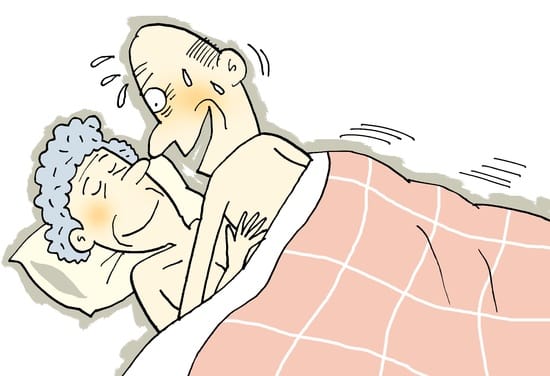Arbitrarily, statistics reflecting the failure rates of treatment procedures for sexual dysfunction in the aging population will be considered in this section rather than dividing the material between the discussions of sexual inadequacy in the aging male and female.
A brief single presentation seems in order since only marital units are available for consideration in this age group. The male and female statistics are essentially inseparable from a therapeutic point of view, and the overall sample is entirely too small for definitive individual interpretation.
Statistics
In 51 of the total of 56 aging marital units treated for sexual dysfunction, the husband was the instigating agent in bringing the marital unit to therapy. Among the remaining 5 couples, the referral apparently was by the mutual accord in 3 and only at the demand of the wife in 2 couples.
There also was a higher incidence of referred male sexual dysfunction than of female sexual inadequacy in the aging population. Therefore the discussion will focus on the male partner’s age as a point of departure.
Since the husband was the partner most often involved in dysfunctional pathology and was the member of the unit that usually took the necessary steps to accomplish referral to the Foundation, the aging male will be statistically highlighted.
The 56 marital couples referred for treatment divide into 33 units with bilateral complaints of sexual dysfunction and 23 units with unilateral complaints of sexual inadequacy. Thus, there were 89 individual cases of sexual dysfunction treated from the 56 units with husbands’ age 5o years or over as a common baseline.
This 33:23 ratio is a reversal of the overall statistics for dual-partner involvement of marital units as opposed to singly involved units. The fact that bilateral sexual deficiency was dominant among the older marital units is in accord with previously expressed concepts of cultural influences.
Certainly, the older the marital unit the better chance for the Victorian double standard of sexual functioning. With these pressures of performance, one could almost expect more male than female sexual pathology to be in identified unit partners over 50 years of age referred to the Foundation.
The clinical complaints registered by the aging population (male and female) in the 56 marital units referred for treatment. There was a 30.3 percent failure rate to reverse sexual dysfunction, regardless of whether both partners or a single partner is involved, in any marriage with the husband over 50years of age. With gender separation, for the aging male (50 to 79) there was a 25 percent failure rate to reverse his basic complaint of sexual inadequacy as compared to a 40.7 percent failure rate for the aging female (50 to 79).
These statistics simply support the well-established clinical concept that the longer the specific sexual inadequacy exists, the higher the failure rate for any form of therapeutic endeavor.
On the other hand, there was significantly less than the 50 percent failure rate in treatment for any form of sexual dysfunction, regardless of the age of the individuals involved. In short, even if the sexual distress has existed for 25 years or more, there is every reason to attempt the clinical reversal of the symptomatology.
There is so little to lose and so much to gain. Presuming generally good health for the sexual partners, and mutual interests in reversing their established sexual dysfunction, every marital unit, regardless of the ages of the partners involved, should consider the possibility of clinical therapy for sexual dysfunction in a positive vein. The old concept “I’m too old to change” does not apply to the symptoms of sexual dysfunction.

